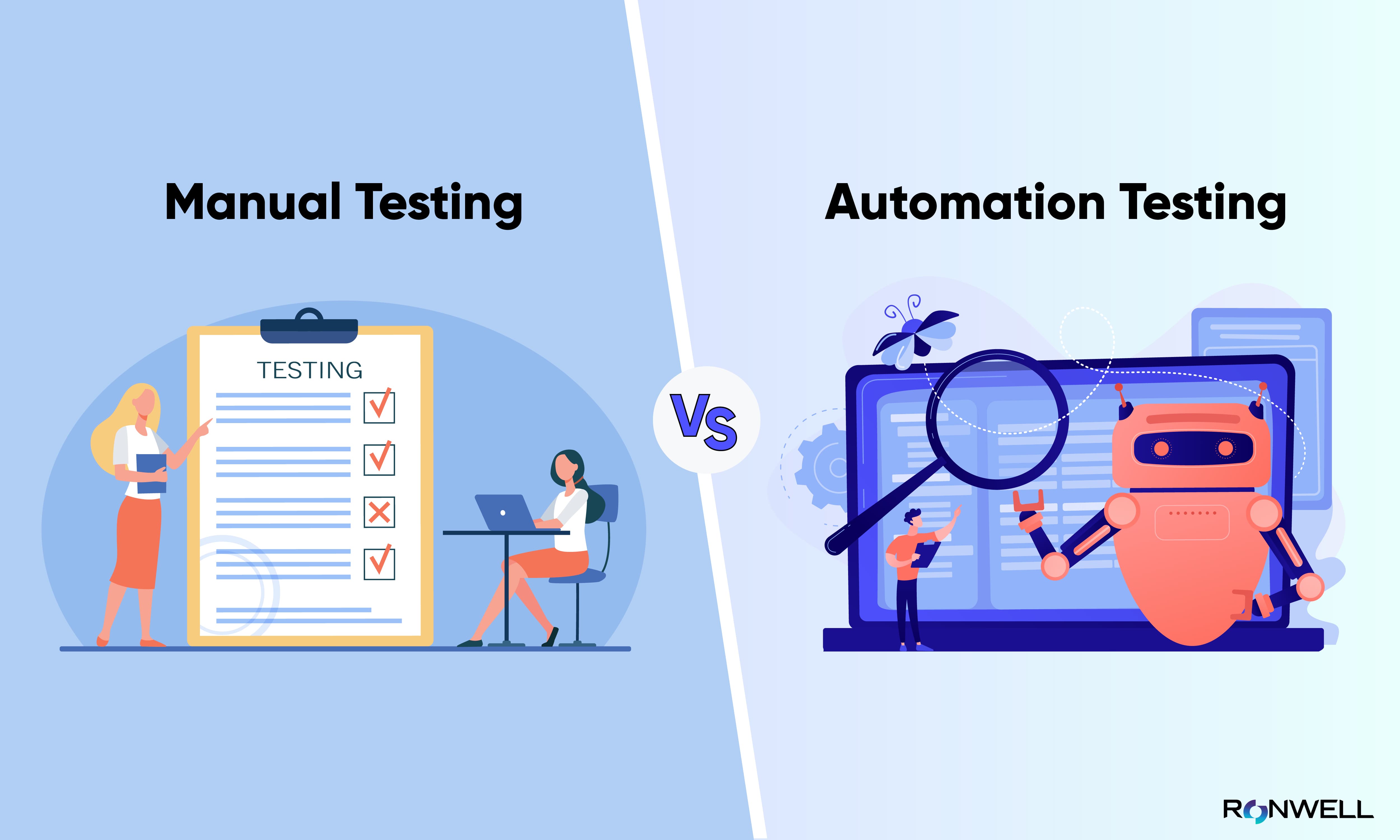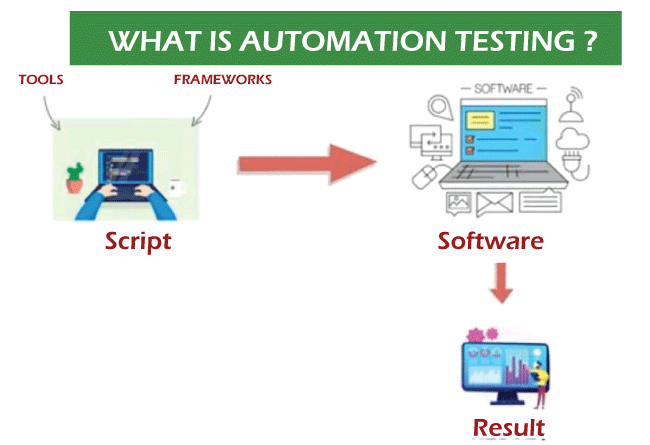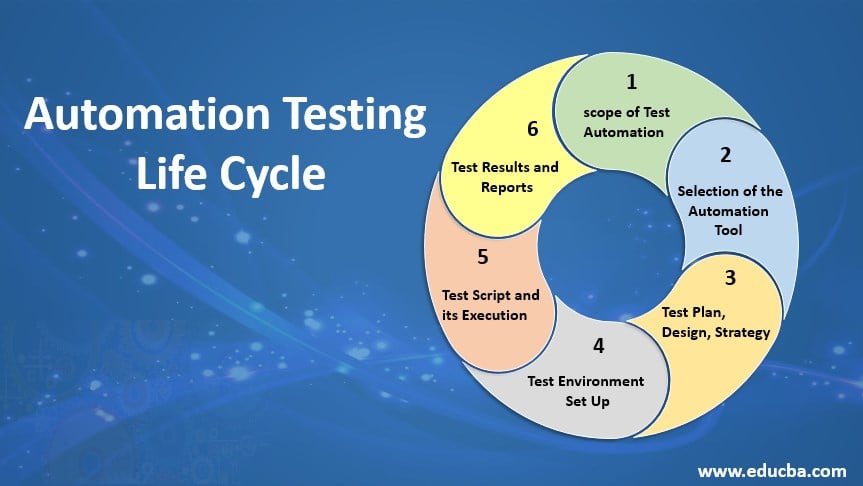From Handbook to Automated Testing: A Comprehensive Guide to Transitioning Smoothly and Efficiently
In the realm of software application testing, the shift from handbook to automated processes has become a significantly essential change for companies seeking to enhance efficiency and accuracy in their testing techniques. As modern technology proceeds to advance, the need for efficient and seamless automatic testing methods has actually never been much more pressing. The journey from guidebook to automated screening is not without its obstacles, yet when approached strategically and with a clear strategy in mind, the benefits can be substantial - automation testing. In this thorough overview, we will discover crucial steps and factors to consider crucial for an effective transition, from the first choice of devices to the combination of automation into existing operations. Remain tuned to reveal the insights that will certainly assist pave the method for a smoother and more efficient testing procedure.
Benefits of Automated Checking
Automated testing provides countless benefits, enhancing effectiveness and precision in software application development processes. One key benefit is the substantial reduction in screening time. Automated examinations can be run all at once on multiple tools and operating systems, significantly speeding up the screening stage compared to hands-on screening. This boosted effectiveness allows for faster responses on the top quality of the software, enabling programmers to identify and attend to problems promptly.
In addition, automated screening guarantees a greater degree of precision in identifying defects. Since automated tests follow predefined scripts, human error is lessened, leading to more trusted examination outcomes. Uniformity in screening is additionally improved, as automated examinations implement the very same actions specifically each time they are run. This uniformity is vital in making certain that all capabilities of the software are extensively tested, reducing the likelihood of undetected insects sliding via to manufacturing.
Choosing the Right Devices

First of all, examine your goals and demands. Comprehend the range of your project, the technologies involved, and the skill set of your team. This analysis will help you determine the capacities and attributes you call for in your screening devices.
Secondly, think about the compatibility of the tools with your existing procedures and systems. Smooth combination with your present software program growth lifecycle is necessary to ensure a smooth change to automation.
In addition, review the scalability and adaptability of the devices. As your screening requires progress, the tools ought to be able to adjust and suit modifications efficiently.
Lastly, consider the assistance and area around the tools. Robust assistance and an active user community can provide useful resources and support when executing automated testing. By meticulously taking into consideration these elements, you can select the right devices that align with your demands and set the phase for an effective transition to automated testing.
Composing Reliable Test Scripts

When crafting test scripts, it is necessary to take into consideration the details demands of the software application being examined and ensure that the manuscripts address all important functionalities. Descriptive and clear naming conventions for examination scripts and test cases can improve readability and maintainability. Additionally, integrating mistake handling devices within the test scripts can aid in identifying and dealing with concerns quickly.
Moreover, arranging test scripts right into modular parts can improve reusability and scalability, minimizing redundancy and boosting efficiency in test manuscript upkeep. Normal reviews and updates to evaluate manuscripts are critical to keep speed with advancing software demands and performances. By adhering to these concepts, testers can create efficient and durable test manuscripts that add considerably to the success of automated screening procedures.
Integrating Automation Into Workflows
By perfectly incorporating automated testing devices like Selenium or Appium into the software development lifecycle, teams can accomplish faster comments on code changes, leading to quicker insect discovery and resolution. This combination permits for constant screening throughout the development process, ensuring that any problems are identified have a peek at this site early on, resulting in greater software program quality. Appropriate integration of automation devices needs collaboration in between growth, testing, and operations groups to develop a unified workflow that optimizes efficiency and effectiveness in providing high-quality software application products.
Making Certain a Smooth Change
Effectively transitioning to automated testing entails thorough preparation and mindful implementation to minimize disruptions and make the most of efficiency in the software program growth procedure - automation testing. To make sure a smooth change, it is vital to begin by carrying out a comprehensive analysis of the present testing processes and identifying areas where automation can bring one of the most significant benefits. Involving with all stakeholders early while doing so, consisting of programmers, testers, and task managers, is critical for gathering assistance and buy-in for the automation effort
Interaction is essential during this transition stage. Clear communication of the objectives, advantages, and assumptions of automated testing helps to manage any kind of resistance or concerns that might occur. In addition, providing sufficient training and sources for staff member to upskill in automation devices and methods is crucial for ensuring a successful change.

Conclusion
To conclude, transitioning from guidebook to automated screening uses various advantages, including raised efficiency and reliability. By choosing the suitable tools, writing effective examination manuscripts, and integrating automation effortlessly into process, companies can make certain a successful and smooth shift. It is vital to welcome automation as a valuable asset in software application testing procedures to boost overall top quality and performance.
In the realm of software application testing, the change from guidebook to why not try these out automated processes has actually come to be a progressively crucial transition for organizations seeking to boost performance and precision in their screening methods. Automated tests can be run concurrently on numerous gadgets and running systems, drastically speeding up the screening phase contrasted to manual screening. Uniformity in testing is additionally boosted, as automated examinations carry out the same actions exactly each time they are run.To make certain the successful application of selected screening tools, the creation of reliable examination manuscripts plays an important role in confirming the capability and efficiency of automated procedures - automation testing. By following these concepts, testers can develop reliable and durable examination manuscripts that contribute considerably to the success of automated screening procedures